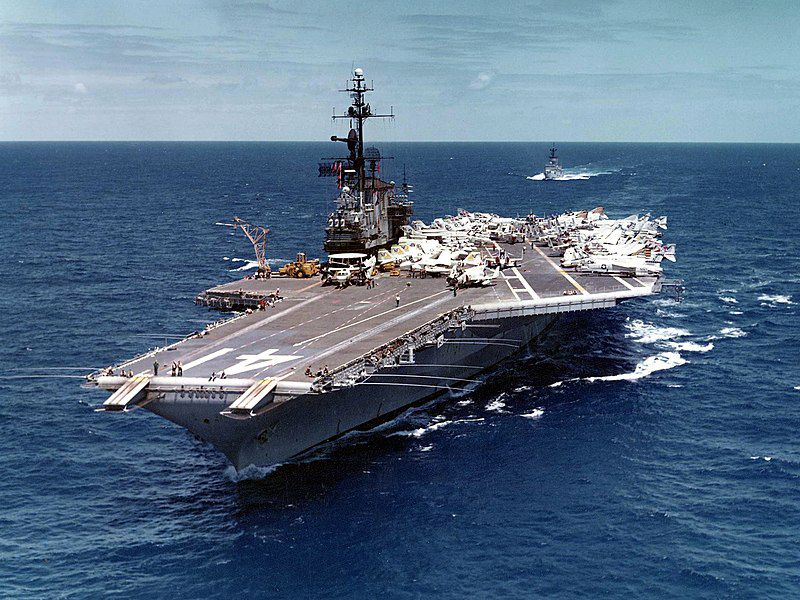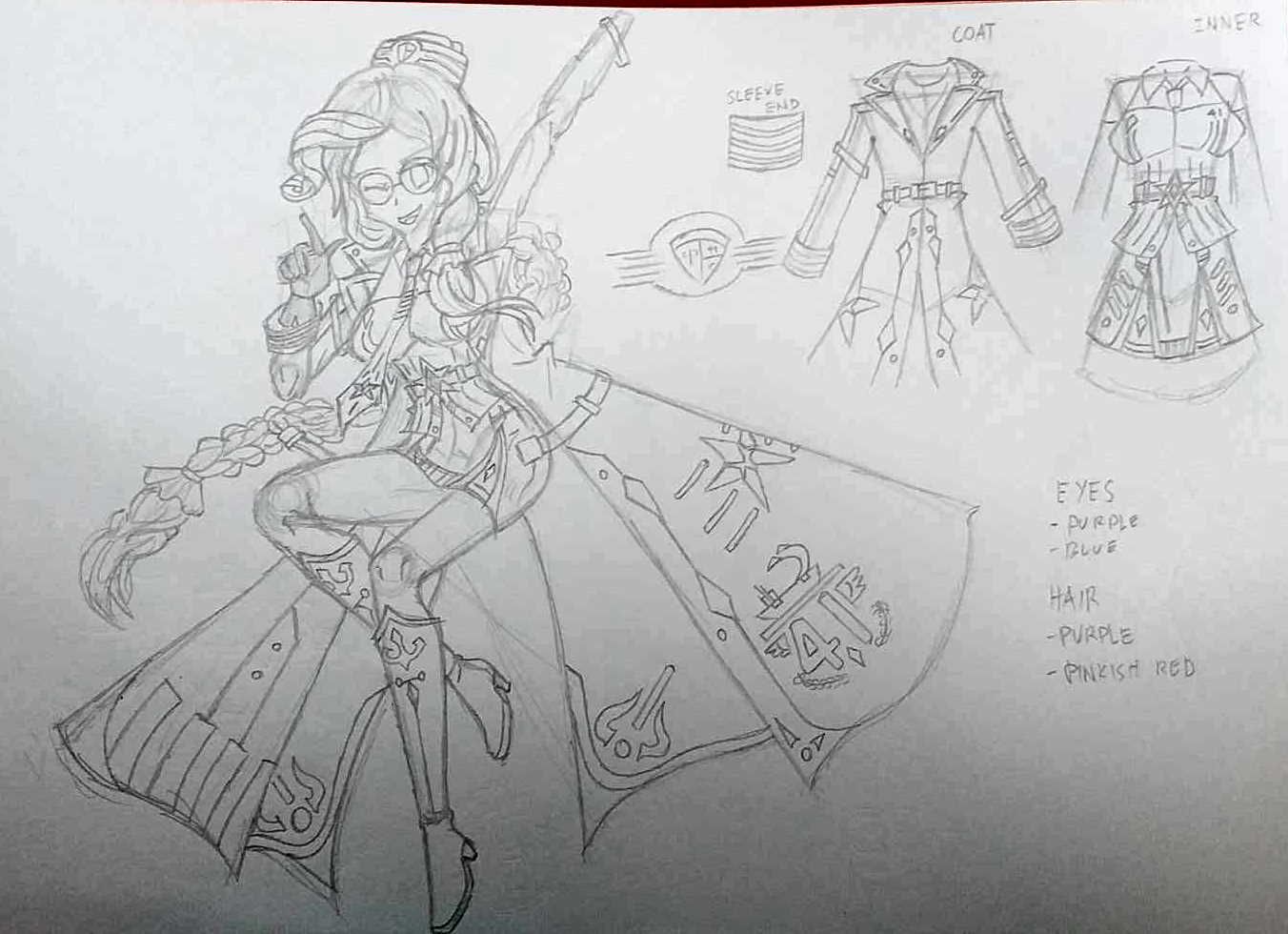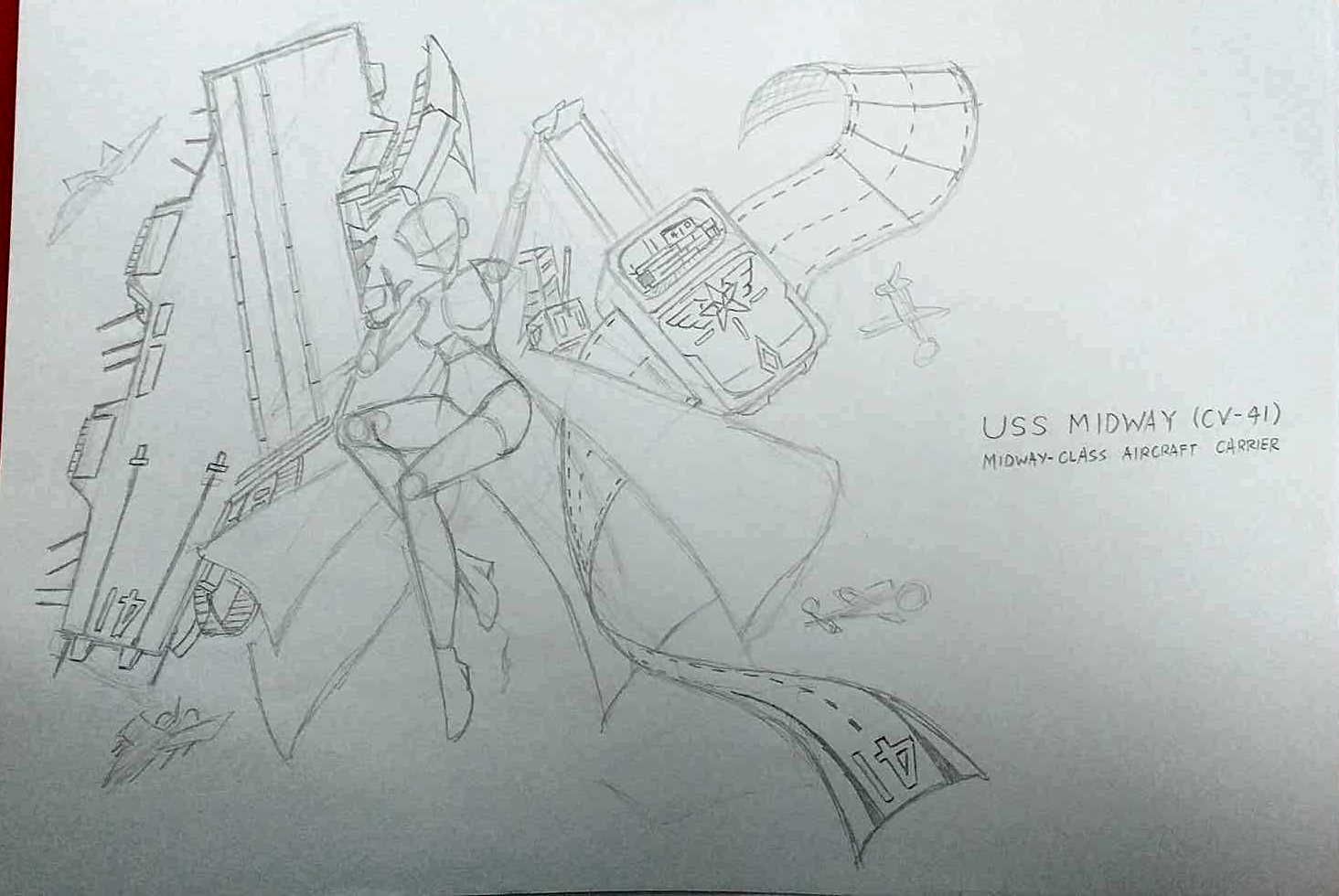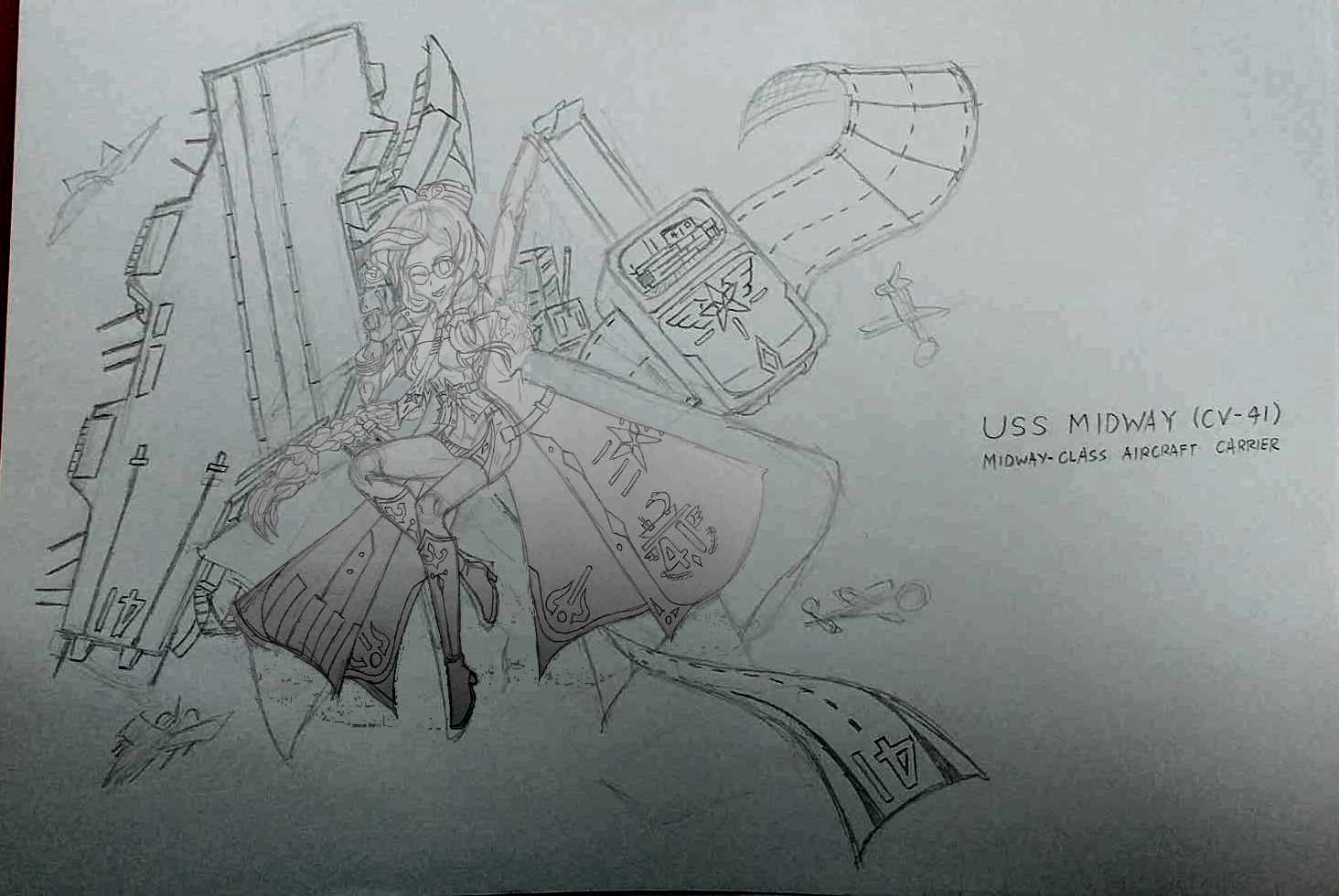Bio #5: U.S.S. Midway (CV-41)
Ship Bio #1: Class and Service
U.S.S. Midway (CV-41) is the lead ship class of the Midway-class aircraft carriers. A new class of aircraft carriers after the Essex-class. She was commissioned 8 days later after the 2nd World War, so she doesn't have any experience in the Pacific Theater. She was built with WW2-era technology before being modernized during the Cold War.
U.S.S. Midway (CV-41) was named after Midway Atoll, where the famous Battle of Midway happened on June 4-7, 1942. This naval battle is the turning point for the Empire of Japan and the United States as what followed the downfall of the Imperial Navy and the Empire itself.
After shakedown in the Caribbean, Midway joined the U.S. Atlantic Fleet training schedule, with Norfolk as her homeport. From 20 February 1946, she was the flagship for Carrier Division 1. In March, she participated in Operation Frostbite testing the Ryan FR Fireball and helicopter rescue techniques for cold-weather operations in the Labrador Sea.
In September 1947, a captured German V-2 rocket was test-fired from the flight deck in Operation Sandy, the first large-rocket launch from a moving platform, and the only moving-platform launch for a V-2. While the rocket lifted off, it then tilted and broke up at 15,000 feet (4,600 m).
On 29 October 1947, Midway sailed for the first of her annual deployments with the in the Mediterranean. Between deployments, Midway trained and received alterations to accommodate heavier aircraft as they were developed.
On 28 June 1955, the ship sailed for Puget Sound Naval Shipyard, where Midway underwent an extensive modernization program (SCB-110, similar to SCB-125 for the Essex-class carriers). Midway received an enclosed hurricane bow, an aft deck-edge elevator, an angled flight deck, and steam catapults, before finally returning to service on 30 September 1957.
From 1945 to 1956, her flight deck resembles that of the Essex-class during WW2, then from 1957 to 1969, she had an angled flight deck similar to the Essex-class during their extensive modifications. Then on 1970, she went on for an entire overhaul, changing her flight deck entirely.
The reason for the overhaul and more extensive modifications is because she was found that the modifications back in 1957 had worsened the ship's seakeeping capabilities and ability to conduct air operations in rough seas, which made further modifications necessary to correct the problem.
After her extensive overhaul and modifications have been completed, she was sent to Vietnam to participate in the Vietnam War.
After the Vietnam War, she went through a refit in 1986. Before another $138 million refit was approved to rectify the stability problems, it was even proposed to decommission Midway. This is during the aircraft carrier's service in the Western Pacific, contacting with nations such as Japan, Taiwan, and the Philippines.
In 1990, U.S.S. Midway (CV-41) participated in Operation Desert Storm known as the Gulf War and was fought around in the Middle East.
In 1991, she took part in the evacuation of 20,000 military members and their families from Clark Air Base, on the island of Luzon, after the eruption of Mount Pinatubo. Midway, along with twenty other U.S. naval ships, ferried the evacuees to the island of Cebu, where they were taken off the ship by helicopter. After taking part in the evacuation, the aircraft carrier once again returned to Yokosuka.
On August 1991, Midway departed Yokosuka for the last time and returned to Pearl Harbor. There, she turned over with USS Independence (CV-62), which replaced Midway as the forward-deployed carrier in Yokosuka. The ship disembarks "tigers" (guests of crew members) before making her final voyage to San Diego.
She was decommissioned on April 11, 1992 and was stricken from the Naval Register Vessel on March 17, 1997.
On 30 September 2003, ex-Midway began her journey from the Navy Inactive Ship Maintenance Facility, Bremerton, Washington, to San Diego, California, in preparation for use as a museum and memorial. The aircraft carrier was docked in early October at the Charles P. Howard Terminal in Oakland, California, while work proceeded on the Broadway Pier in downtown San Diego. On 10 January 2004, the ship was moored at her final location, where she was opened to the public on 7 June 2004 as a museum.
She was known to be the only aircraft carrier in the United States from the WW2-era to be preserve as a museum ship and is not an Essex-class (4 Essex-class carriers were preserved).
On November 11, 2012, a college basketball game between the Syracuse Orange and the San Diego State Aztecs was played on the flight deck. The Orange won, 62–49.
Unlike the Essex-class, U.S.S. Midway (CV-41) wasn't recommissioned and didn't participate in the Battle of RIMPAC 2012. The 4 Essex-class shadowed the U.S.S. Midway because of that battle, but the 4 Essex-class reconsider to visit U.S.S. Midway.
She is one of the preserved WW2-era ships that didn't partake in the Battle of RIMPAC 2012, but she was loved by the Essex-class as on 2019, she participated in CarrierChase, an event where all 5 aircraft carriers met in New York.
Unfortunately, she sunk on Bikini Atoll on July 7, 2054 along with the rest of the warships that are museum ships. Operation CrossXs was the end for the World War 2 Pacific Naval Fleet that fought against a more advanced alien fleet back in 2012 and the other warships that survived throughout the Cold War.
Ship Bio #2: SHIP

Ship Bio #3: Armaments and Others
As Built:
18 × 5"/54 caliber Mark 16 guns
84 × Bofors 40 mm guns
56 × Oerlikon 20 mm cannons
After Refit:
2 8-cell Sea Sparrow launchers
2 Phalanx CIWS
Aircraft carried:
137 theoretical, 100 (1940s–50s)
70 (Vietnam–retirement)
Ship Bio #4: HUMAN EMBODIMENT

Nicknames:
1. Midway Magic
2. Rock n' Roll Carrier
Ship Bio #5: SHIP RIGGINGS

Ship Bio #6: AZUR LANE DESIGN - Drawn by me in 2020

Ship Bio #7: AZUR LANE DESIGN - Official
-NO OFFICIAL DESIGN YET | LOOK FURTHER ANNOUNCEMENTS FOR AZUR LANE-
Bạn đang đọc truyện trên: AzTruyen.Top